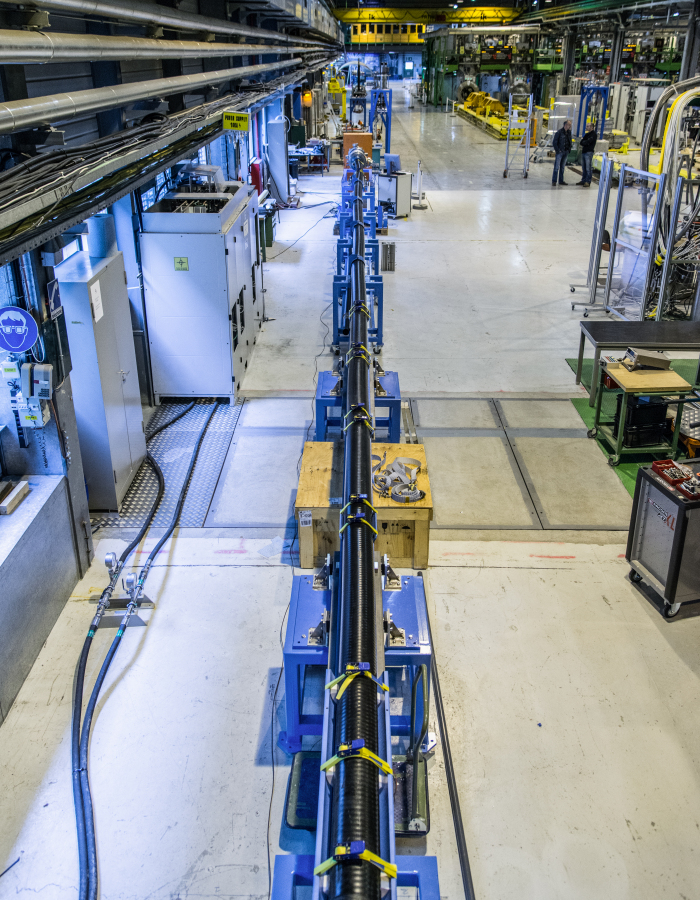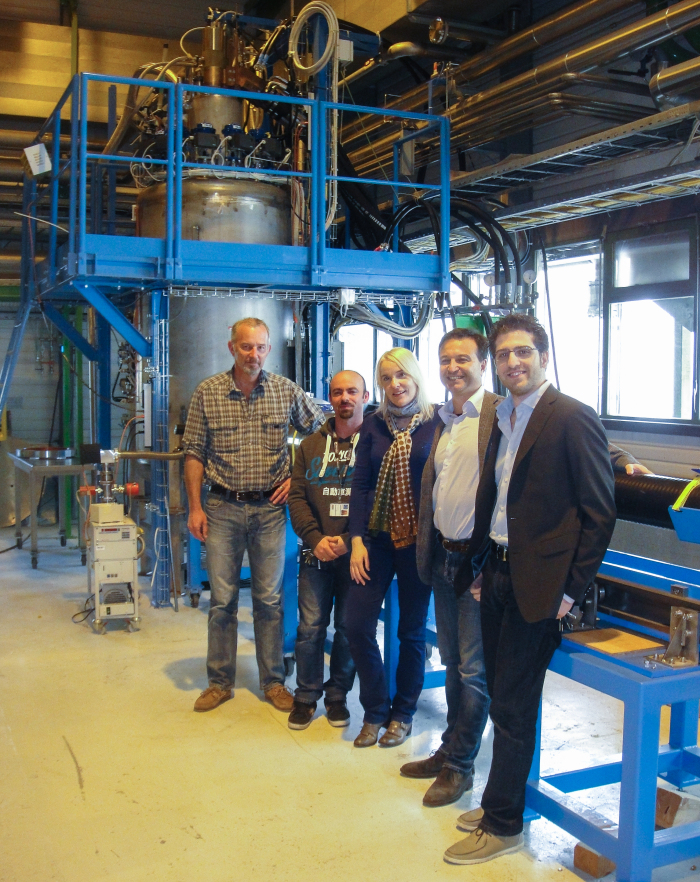|
 World-record current in the MgB2 superconductor World-record current in the MgB2 superconductor
by Thomas Hind (CERN) and Amalia Ballarino (CERN)
 
Fig 1, left. The 20-metre long electrical transmission line containing the two 20 kA MgB2 cables.
Image credit: CERN
Fig 2, right. Members of the CERN Superconductors and Superconducting Devices team in front of the test station. Image credit: CERN
Members of the CERN Superconductors team have achieved a world-record current in a Magnesium Diboride (MgB2) superconductor.
A current of 20kA was transferred at 24K in an MgB2 electrical transfer line developed at CERN. The line consists of two cables, each 20m long, made from MgB2 round wires and connected in series, with the cooling provided by a forced flow of helium gas. After operation at nominal current, a series of quench tests at 20 kA and a complete thermal cycle from room temperature to nominal operation temperature were successfully performed.
MgB2’s superconducting properties were discovered in 2001, but conductor technology only existed in the form of tape at the time. Round wire was not available when the project started, but had to be developed. The cables and associated technologies were designed and tested and CERN, with the superconducting wire the result of a joint R&D effort between CERN and Columbus Superconductors in Genova, Italy.
The project is part of the FP7 Hi-Lumi LHC Design Study, which aims to move the power converters supplying current to the superconducting magnets either to the surface or to radiation free underground areas and to use high temperature superconducting transmission lines to connect them.
These cables have further uses outside of particle physics, and their use has been proposed for innovative transmission lines used for long-distance transport of green power. The test results show that the MgB2 cables can be operated at and above the temperature of liquid hydrogen and that the basic related technology is now proven.
Read more >>
|